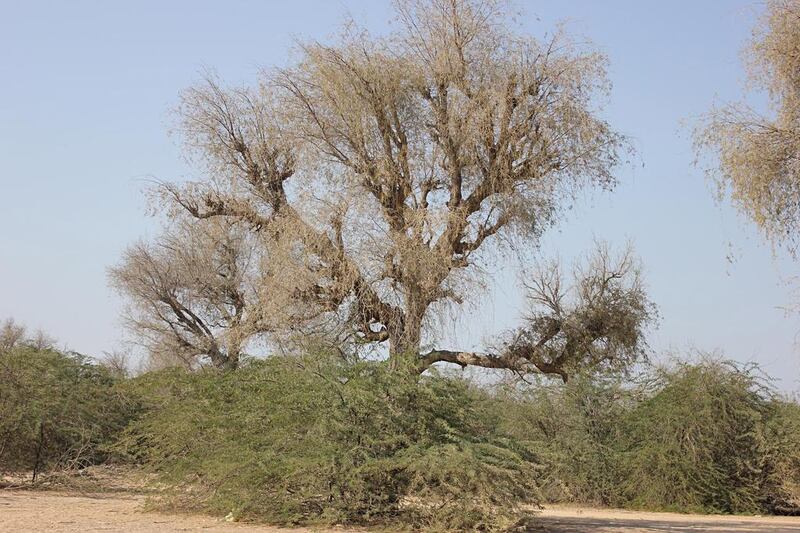DUBAI // A Central American tree species introduced decades ago for forests in Abu Dhabi is wreaking havoc in the Northern Emirates, destroying farms and native flora.
Prosopis juliflora, popularly known as mesquite, was introduced in the 1970s but is now growing in dense forests in the valleys of the Northern Emirates.
The species has a local name, ghoeif, which is similar to that of its cousin the ghaf, a native under threat from the invader.
Dr Ali El-Keblawy, associate professor at the University of Sharjah, said the problem had to do with allelochemicals, toxic chemicals produced from the plant to defend itself from herbivores or competing plants.
The allelochemicals form when the leaves drop to the ground, and they kill nearby plants.
“In the native range, these chemicals are defence against animals, against other plants,” said Dr El-Keblawy, who is also director of the Sharjah Seed Bank and Herbarium. “But here in the new range they are for attacking.”
Mesquite grows very quickly and can “green” a forest in a few months, he said. “All native plants are suffering but the most important one, and it is like a national tree of the UAE, is ghaf.”
On his computer, Dr El-Keblawy has scores of images of mature ghaf trees with mesquite seedlings growing under them. As the shrubs get bigger they suffocate the native plant.
“Ghaf is very generous but now this new guest is not a desirable one,” Dr El-Keblawy said.
He said cutting the trees down or poisoning them did not work, and there were no animals to eat them, controlling their growth. “There is no way to get rid of them. How to survive them – this is the question.”
Authorities have been trying to solve the problem by cutting them down.
“Removal of the ghoeif plants in Sharjah is under way in agricultural and residential areas,” said Salem Al Suwaidi, transport director at the Sharjah Municipality, whose department is using forklifts, bulldozers and lorries to do the job.
But Dr El-Keblawy said each tree had many root buds that are activated when its trunk is cut.
“Once you cut the vegetative crown, all of the buds will be activated to produce new plants,” he said. “So you cut one, you get hundreds.”
The two plants have noticeable differences. Ghaf, one of the main trees of the UAE desert, is taller with a long, greyish trunk. Ghoeif is more spread out, with many smaller trunks and is the greener of the two.
“When we work there it is hard to communicate with each other, only by mobile,” Dr El-Keblawy said. “Once you go in, you lose your way, you do not know the directions.”
Dr El-Keblawy suggested controlling mesquite by introducing Opuncia, a genus of cacti, which can successfully compete with mesquite. The cacti are unlikely to spread and become invasive species as they have specific requirements, he said.
Another option could be to use mesquite, which tolerates high salinity, in reclaiming salt-affected soil. The approach has been used in India where, over time, the trees reduce soil salinity, improve pH levels and increase the nutrient content of soil. They can also be harvested for charcoal.
vtodorova@thenational.ae
* Additional reporting by Thaer Zriqat





